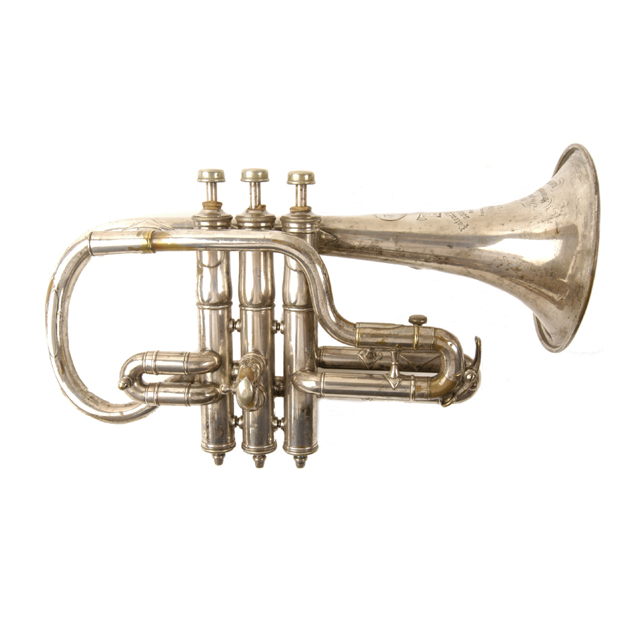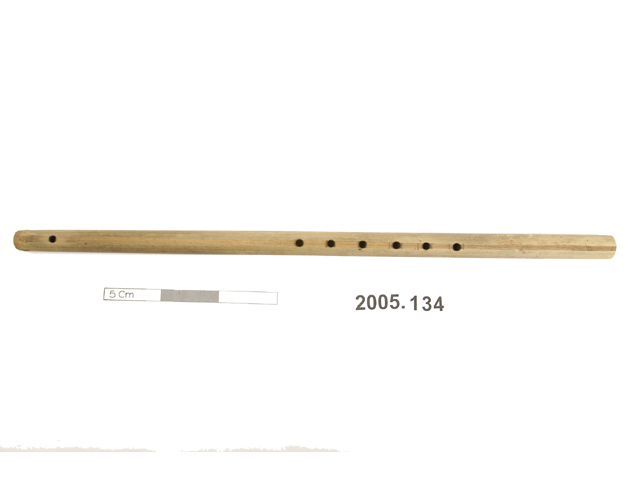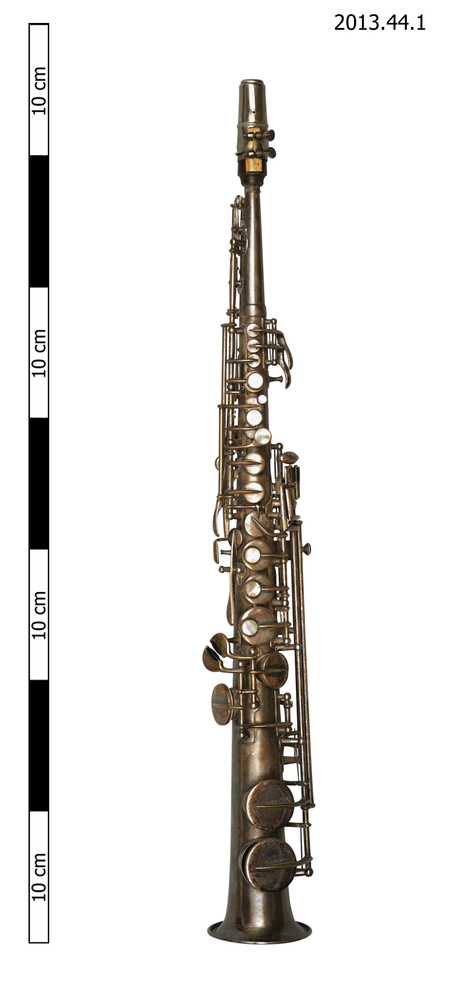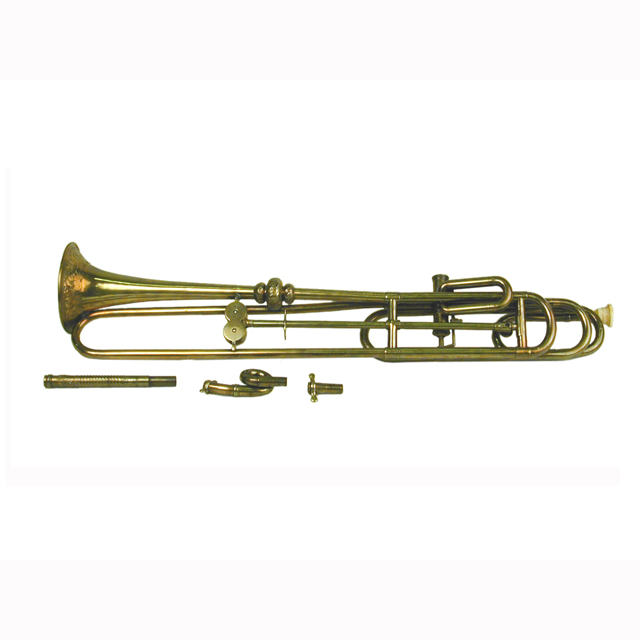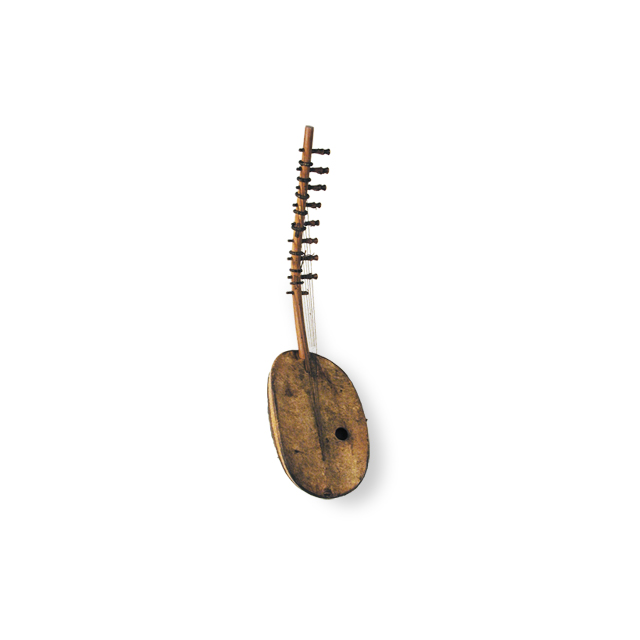
Ennanga, arched harp with 8 strings. The resonator is a shallow wooden shell similar shape to a tortoise shell. This is covered by a heavy leather membrane which is stitched to a piece of leather covering the back of the instrument. The curved neck enters through the membrane. The nine pegs are in the shape of a double cone, one above the other. The strings are tied round the flange on the pegs, pass behind the neck and are hooked round the end of the peg. Below each peg, except the one for the lowest note, is a ring made of a section of snake-tail. Four of these retain the slivers of wood that wedge them into position. At their lower ends, the strings pass through the membrane, where they are attached to a narrow wooden string holder that passes along the length of the bowl and projects at each end. A cord and cloth handle is attached to the back of the instrument.
Purchased from E.B. Haddon, a noted lexicographer of East African languages. 'Enanga' is cited as the object name in the Horniman Museum register, but more recent sources give 'Ekidongo' as the name for the Nyoro harp.



